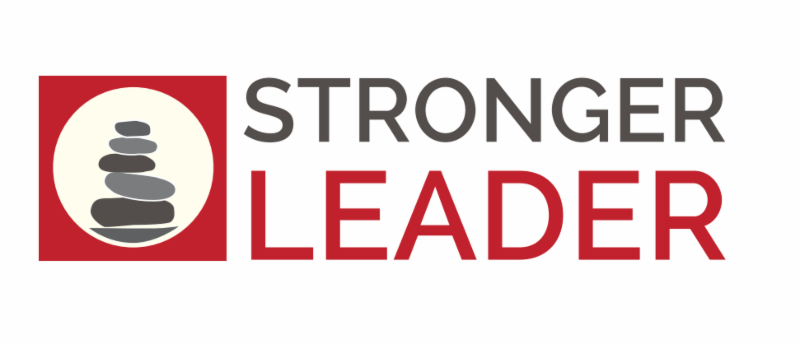Wondering what’s hot in leadership development and talent management for 2015? I attended a webinar hosted by The Marcus Buckingham Company (TMBC), a leader in strengths-based professional development, and I’m excited to report the trends as predicted by TMBC founder Marcus Buckingham and CEO Jason Averbook. As a strengths zealot and longtime follower of Marcus and his work, I wanted to hear what these guys see as relevant for talent management this year. TMBC is calling for a radical shift in the way we manage people (more on The Year of the Coach below), and noted 5 trends for 2015.
1. Personalization – Remember how excited you’d get when you were a kid and found a little license plate or key chain with your name on it? Or how disappointed you'd be when your not so common name was nowhere to be found (i.e., Gloria)? And how super excited you were when you finally found one? Everyone wants a personalized experience, including in the workplace. It captures our attention, like those little license plates.
The personalization trend in talent development can be implemented by providing training and coaching that’s individualized, intimate and focused on the person, not the organization.
Buckingham gave the example of personalization in onboarding, which should be less about why the company is great and more about why the person is a great fit for the organization. We need to focus more on our people's strengths and let them see how they can be an asset to our organization.
Jason Averbook said it well:
This is the power of a strengths-based approach: it sets the stage for a personalized coaching experience, focused on the unique strengths of each individual on the team.
What’s your vision for increasing employee engagement this year? How can you get the best out of each member of the team with a personalized approach? What do you think would happen if you asked each person what would help them work at their best?
2. Focus on the team leader. You know that the team leader is the one who makes things happen. Without that local oversight and structure, a project can fall apart. The team leader sets the tone, creates structure and motivation and brings together performance and engagement.
TMBC suggests it’s time to go micro. If we’re measuring employee engagement, we need to be asking the right questions of the right people at the right time, related to the projects people are working on, the teams where people are functioning. And the team leader is central to this process of increasing engagement.
 The trend is to give team leaders the tools they need to function at their best and to offer personalized advice, coaching and recommendations for action to their teams. That's what will create more effective organizations.
The trend is to give team leaders the tools they need to function at their best and to offer personalized advice, coaching and recommendations for action to their teams. That's what will create more effective organizations.
#3. The shift from Big Data to the Right Data. Over the past year, big data has been a big thing, with technology tools enabling us to cull information across millions of data points. But that boils everything down to an average mass of information.
Remember trend #1? Big data is far from personalized.
Another issue with the data we typically collect is the amount of evaluation error in the multi-source performance appraisal (e.g., 360 degree assessment). We keep using these tools, assuming that with enough time and training, we can teach people to reliably rate others on their performance.
However, recent studies reveal that no matter how much time and training, we can never become reliable raters of someone else’s performance. Our ratings are considered to be part of an "idiosyncratic rater effect" which is more about us than the people we're rating. About 61% of a rating can be attributed to this type of bias (if you're interested in the research, you can access it here).
That’s a lot. And makes you realize we need to rethink the tools we’re using. Again, a strengths-based, personalized approach can help us collect and apply the right data to help people work at their best.
#4. Feedback is not coaching. Thank you, Marcus! This is an important distinction to make. Feedback is typically focused on the details of what’s not succeeding in what you're doing now. It's threatening, typically unwelcome and evokes defensiveness. Not good!
Coaching is typically focused on the future, a productive process that looks at strengths, successes and solutions. It's the type of positive attention we all seek. Attention that makes us better.
In fact, Marcus proclaimed 2015 The Year of the Coach.
He said, "We'll see companies more and more realizing that coaching is the fastest way to excellent performance." Can you imagine a sports team without a coach? A musician without a teacher or conductor? We don't question that coaching helps elicit and amplify a person's talents. People flourish into excellent performance with an excellent teacher or coach.
So this year, TMBC sees the trend of providing coach training for team leaders (see #2). According to a live poll of the webinar viewers, about 85% of managers spend less than 25% of their time coaching. How can we improve those numbers to help each member of the team be more effective and get the personalized coaching he or she needs?
The Year of the Coach!
I liked Buckingham’s suggestion to establish a coaching ritual to get team leaders and members in the habit of regular and ongoing coaching. It can be as little as 10 minutes a week, as long as it’s focused on strengths and helping people reach their project goals.
How can you practically implement coaching at a scale that’s needed in your organization? TMBC forecasts training that consists of simple, quick and usable learning modules that teach coaching skills. I like it!
#5 – Technology. The final trend is technology, which is an integral part of our lives. This is how we work now, so this is how we should be helping people be at their best.
Expect mobile technology that will provide relevant information personalized (there's that word again) based on a set of assessment results. Think of an autoresponder, where you can schedule and drip personalized content to people based on their interests. This is becoming widely used in changing behavior in many realms, including healthcare, with programs that push health information based on your specific medical concern, whether diabetes, obesity or heart disease. An app can send a pushed message about making healthy food choices in the late afternoon, when someone is considering what to have for dinner.
For professional development, TMBC is already doing this with the StandOut assessment and program. And they recently partnered with SurveyMonkey, so no doubt more cool stuff is on the horizon.
I think these trends are exciting and spot on. The discussion was rich and full of examples, too many to mention here.
If you'd like to view the entire webinar, check out the recording on YouTube: http://youtu.be/QCcRfHkJE_g
And come back for Part 2 of this post, “Putting Trends into Action."
Wondering how to implement these trends in your own organization? Give me a call at 805-482-1625 or send me an email at gmiele@optimaldevelopmentcoaching.com and I’d be happy to help you find the right solutions to be on trend in talent management in 2015.

































 achieve greater business success through coaching programs, workshops, staff training, executive coaching and keynote speeches. Visit her website at
achieve greater business success through coaching programs, workshops, staff training, executive coaching and keynote speeches. Visit her website at 

